
8D ASSOCIATION
The 8D Association is dedicated to promoting the history of the railways of South Lancashire, Merseyside and North Cheshire.
The Cheshire Lines Committee (CLC).
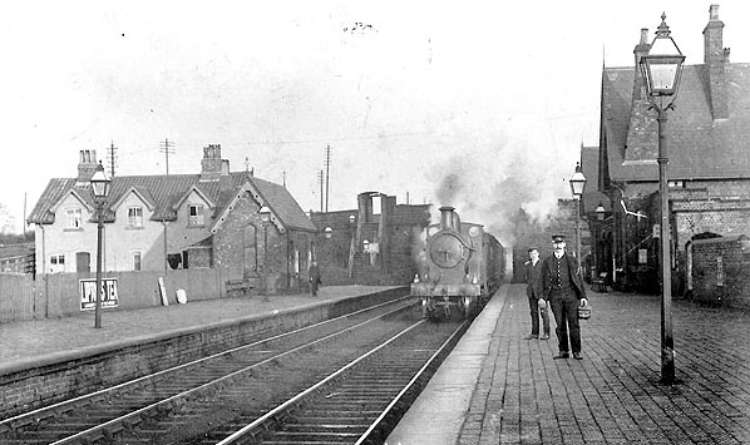
By the mid 1860’s the coal fields of Wigan and Blackburn needed a rail link to a port and consideration was given to a number of projected lines to enable this to happen. The Lancashire Union Railways (LUR) proposed a line to run from a point near Wigan (Springs Branch) to connect with the already established St Helens Railway at Gerrads Bridge. This would give the joint London and North Western and Lancashire and Yorkshire company direct access to the port of Garston as the LNWR had absorbed the St Helens Railway during 1864. An Act of Parliament was granted to the LUR on 29th June 1865. Construction would begin in the following year and would take around 3 years with the line running via Garswood. The LNWR and the Lancashire and Yorkshire (L&Y) both had a vested interest in the LUR and when the line was complete the L&Y exercised its running powers along the line for freight only leaving the LNWR to operate the passenger services.
The line was nearing completion by the summer of 1869 and was inspected by Colonel Hutchinson on 21st August 1869. Apparently the colonel found some issues with the construction and the opening had to be delayed until 1st November 1869 for goods and 1st December 1869 for passenger services although he did pass the line fit for the running of passenger trains from 5th November 1869.
Introduction
In the mid 1850’s the London and North Western Railways (LNWR) Liverpool to Manchester Line carried the vast amount of traffic between the two cities. The Lancashire and Yorkshire had by this time opened its own line into the city of Liverpool via Rainford and Walton into its terminus at Liverpool Exchange.
With trade between the two cities still on the increase the Manchester Sheffield and Lincoln Railway (MS&LR) and the Great Northern (GN) wanted a slice of the market. It would be these two companies along with the Midland Railway (MR) who would build a new inter-city line between Liverpool and Manchester. The line became known as the Cheshire Lines Committee or the CLC for short.
Construction.
The line was constructed in stages with Brunswick to Garston opening in 1864 as the Garston and Liverpool Railway this was supported by the GN. Major engineering projects along the line were at the Liverpool and Manchester ends with the section running into Liverpool Central being hewn out of sandstone with a mixture of cuttings and tunnels and a large brick built viaduct at the Manchester end. A tunnel was originally constructed at Farnworth (Widnes) but this was opened out in the 1920’s. The crossing of the Sankey Canal near Warrington was effected with the building of a short sandstone viaduct and an embankment was required between Widnes East Junction and a point west of Penketh. The main part of the line was opened in 1873 from a point near Garston to Cornbrook near Manchester with trains running into Oxford Road and London Road stations. The next part to open was the section from Brunswick to Liverpool Central station in 1874. The next section was from Cornbrook to a temporary terminus for Manchester in 1877. The final section to open was from the temporary terminus into Manchester Central station. The line was now complete having taken 16 years to build from end to end.
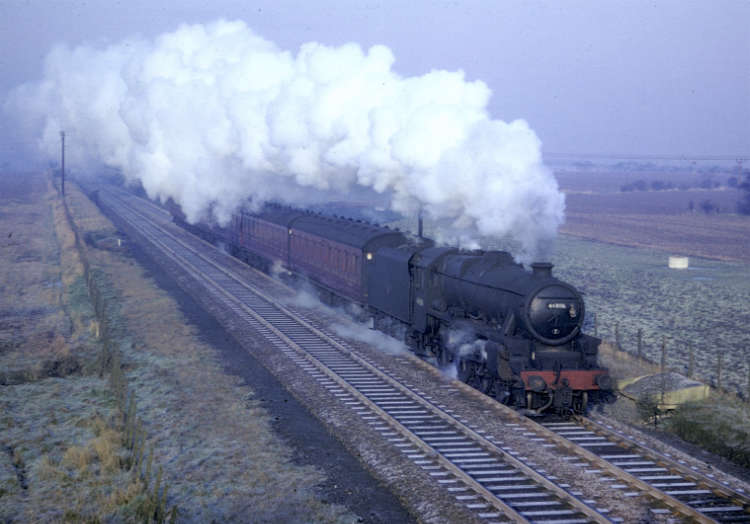
Operation.
With the opening of Manchester Central on 1st May 1880 the CLC started to concentrate on improving its passenger services. It was felt that a ‘much superior’ service could be provided when compared to the LNWR and L & Y. Express trains were run every hour, at half past the hour, from each terminus from 8.30am to 9.30pm; to cover the 34 miles in 45 minutes. This included an intermediate stop at Warrington. Not to be outdone the L & Y introduced a 40 minute service from Liverpool Exchange which was facilitated by the opening of several new cut off lines in the Wigan area. In 1883 the ‘Straight Line’ avoiding Warrington was opened by the CLC and certain express trains were routed along it thus enabling the company to match the L & Y time of 40 minutes end to end. Intermingled with this express service were stopping trains which operated at regular intervals with some passing along the Widnes Loop and some via Farnworth (Widnes North) coupled with these was traffic from the Halewood sidings emanating from Huskisson and Brunswick goods stations. A price war was initiated by Sir Edward Watkin of the CLC in the late 1870’s with a reduction in the first class fare of 1s/6d with the second and third class fare’s being reduced by 9d. The LNWR and L & Y followed suit but with being the first to do so the CLC had captured a further slice of the market with the initiative increasing passenger receipts by £10,000 in the first six weeks.
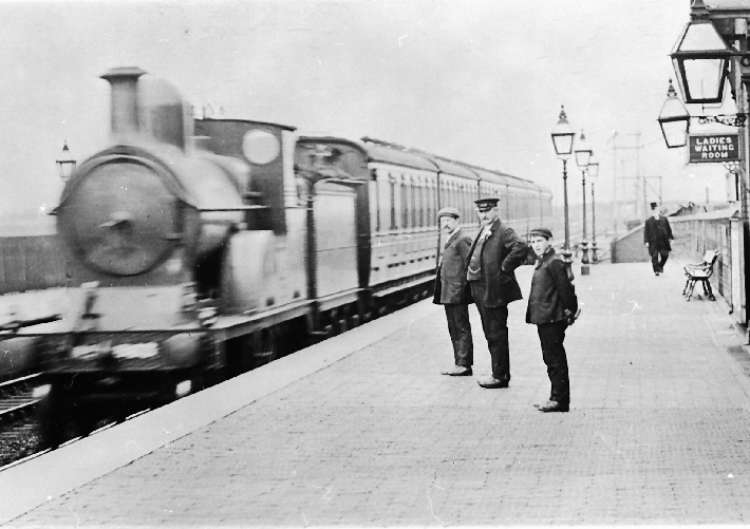
On the freight side the company was still at a disadvantage when compared to its two rivals, the LNWR and the L & Y, as it had no direct access to the lucrative trade emanating from Liverpool Docks. With the opening of a direct line from Glazebrook to Timperley and a connection with the M S & L line at Stockport freight trains could now avoid the congestion of Manchester. The original terminus in Liverpool at Brunswick had been adapted for use as a goods station but was not ideally situated being at the southern end of the dock complex with the docks expanding northwards. The CLC could access further north by using the tramways that existed from Brunswick but these were cluttered at the time with local omnibuses and other companies traffic. In 1873 the CLC acquired 23 acres of land to the north at Huskisson dock to construct a new goods station, but without any access to it. Two proposals were put forward to reach Huskisson goods station, the first, involved a deep cutting or tunnel through the centre of Liverpool at an estimated cost of £1,500,00; the second, and preferred option, a line from Halewood, on the main line, northwards, skirting Liverpool on its eastern side with a series of tunnels from Walton on the Hill down to the new goods station, estimated cost £600,000. Parliamentary sanction was obtained under the Cheshire Lines Act of 1874 for the construction of the ‘North Liverpool Lines’ and within the Act the division of revenue to the three parent companies was set out. This development affected the main line with the laying out of extensive sidings at Halewood and the quadrupling of lines through Hunts Cross. The new line opened throughout on 1st June 1880 and all traffic to and from either Huskisson or Brunswick originated at Halewood sidings.
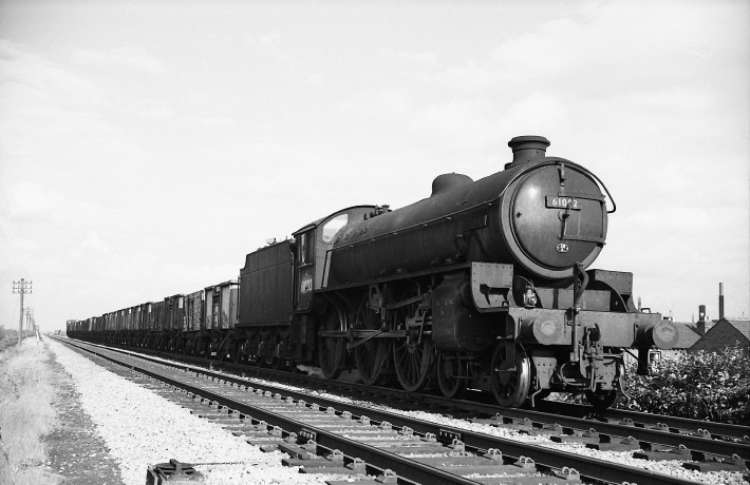
To view more of Harry’s Waterway Images click here
The construction of the Mersey Railway authorised by the Mersey Railway Act of 1882 allowed for a Low Level station to be constructed directly beneath Liverpool Central. This brought benefits to both the CLC and Mersey Railway offering a smooth interchange for services to the Wirral and an annual fixed rent for the CLC of £2,000. Included within the agreement of 31st December 1886 was that ‘The Mersey Railway be permitted to construct, at its own cost, a passenger station under the High Level Station of the Committee’. It continues with ‘The ownership of the site of the station to remain at all times in the Committee’. Various other clauses were inserted for the Committee to make connections with the Mersey Railway in both Liverpool and Birkenhead. The Low Level station opened on 11th January 1892 and the Mersey Railway was not the success that had been envisaged due to steam traction being used in a railway virtually completely in tunnels. In 1903 electric traction was introduced and the companies fortunes changed with many more people taking up the option of travelling into Liverpool Central and onward to the Wirral on the new ‘clean’ railway.
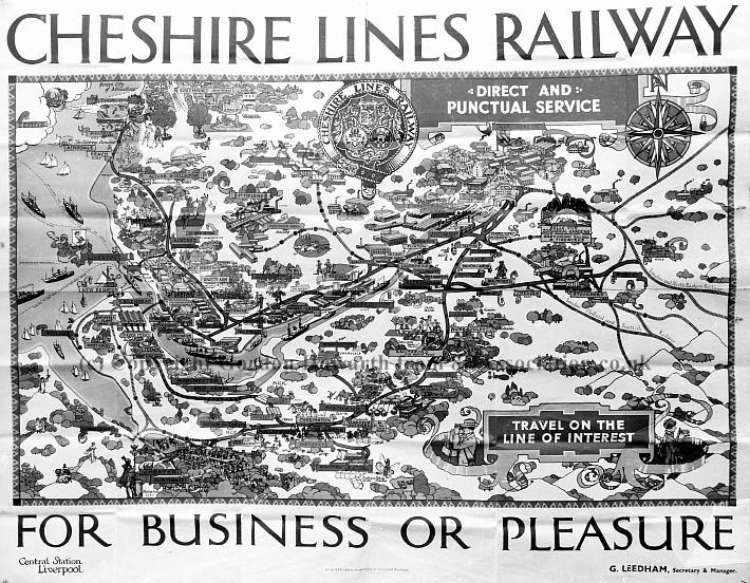
At the 1923 Grouping the line stayed independent, along with several other Joint lines in the country with Sir Eric Geddes, Minister of Transport stating on 14th June 1921 that; ‘If you took a joint line like the Cheshire Lines and give it to one group or another, you would seriously affect the financial position of the group which is deprived of that joint interest as an access to great centres of traffic’. It became clear that the joint lines were not dealt with in the Bill as the Bill would have been two or three times the size that it was. So they were left out and the line became jointly owned by the LMS and LNER. The LNER owning two thirds of the shares with the LMS the remaining third.
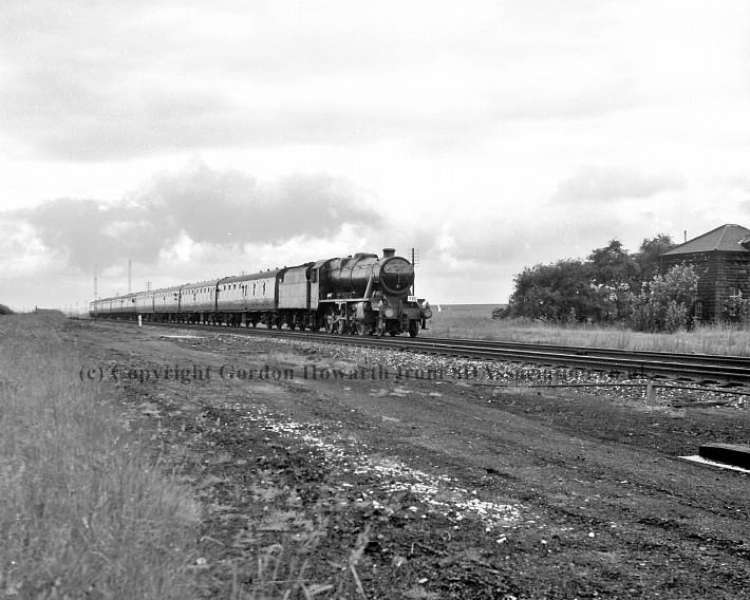
During the Second World War several new facilities were opened along the line with a Royal Ordnance Factory being constructed at Risley, near Warrington, linked to the CLC with sidings and a passenger station. The RAF Maintenance unit was also constructed at Burtonwood, near Warrington, latterly becoming the American Air Force base. This facility was connected via a private siding. At the Liverpool end of the line further sidings were added to the Halewood complex to deal with the increased traffic from the docks. At St Michaels a petrol storage was constructed by the Petroleum Board with a private siding connection laid from the down (Liverpool direction) line and four sidings, with a capacity to hold 84 wagons, installed. Troop trains were also catered for with 361 inward movements and 831 outwards in 1944 and 509 in and 471 out in 1945.
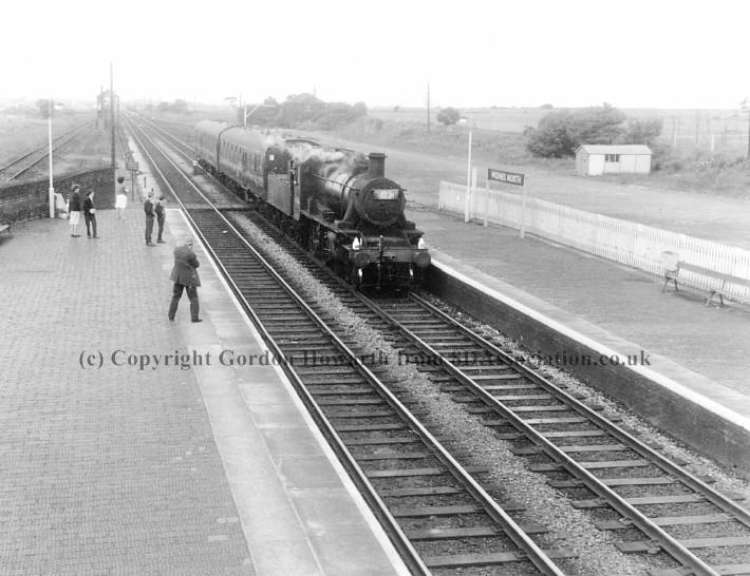
An interesting development in freight activity occurred in May 1964 with the station yard at Widnes North being opened by Motor Vehicle Collection Ltd for the distribution of cars both locally and for export. Loaded trains regularly began to arrive from Vauxhall motors of Luton usually behind a Crewe based Britannia and latterly Type 4 diesels.
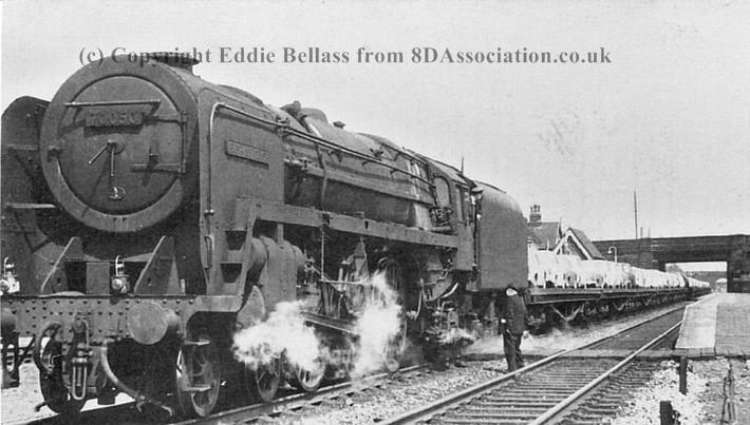
On 1st January 1948 the railways were nationalised and the CLC lost its independent identity becoming wholly operated by a single entity for the first time in its history. Passenger services operated as normal with the express services running hourly, at half past the hour with stopping services running in between. Major changes came with the publication of the Beeching Report in 1959 with Liverpool Central listed for closure along with the Widnes Loop and the passenger service listed in section 2 for ‘modification’. The passenger services via Widnes Central were withdrawn on 3rd October 1964 with the final freight service running on 3rd December 1964, after this the line was closed and lifted shortly after. To facilitate the closure of Central a new chord was opened during September 1966 at Allerton linking the CLC with the LNWR’s line from Ditton Junction to Liverpool Lime Street allowing services to be diverted away from Central. Liverpool Central clung on until succumbing on 17th April 1972 when the final service to Gateacre was withdrawn. By this point the station had been reduced to a single platform face with a single line and a single colour light controlling movements. Plans were already afoot to link the Low Level station with the rest of the line and extend the Merseyrail Northern Line out to Hunts Cross. The station and trainshed were demolished and the site used for the building of the Liverpool Loop and a new deep level station incorporating the Wirral Line. Services along the line did improve in the 1980’s with the introduction of loco hauled services through to Sheffield, Great Yarmouth and Hull augmented with a stopping service which originated at Hunts Cross connecting with Northern Line services through to Manchester Piccadilly. The loco hauled services were replaced when the Trans-Pennine services, once a staple of the Liverpool to Manchester via St Helens Junction line, were re-routed along the CLC in the 1990’s.
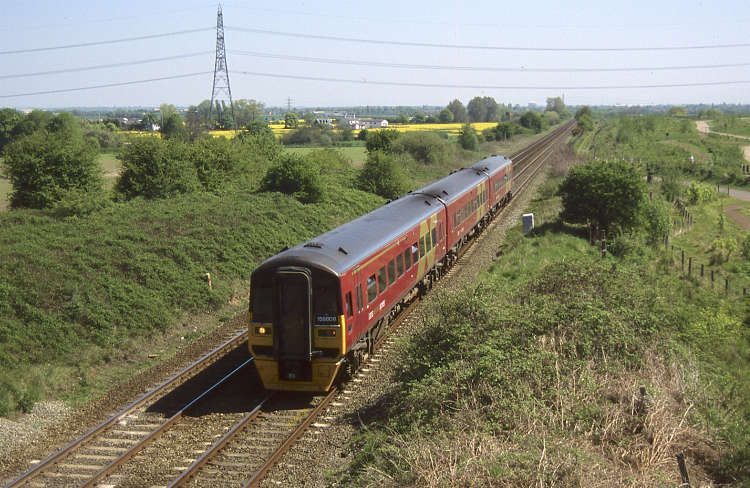
Today.
Today the line is still busy with East Midland Trains and Northern local stopping services but freight along the line is non-existent save for the occasionally diverted Freightliner working. Occasional passenger diversions comprising of diesel loco hauled Pendolino sets look to be a thing of the past as they can now run on the former L & M line via St Helens Junction under their own power. It will be interesting to see if the line is ever electrified as the former L & M line now is. Many of the station building survive along the line complete with original features although several are now used by private businesses.

